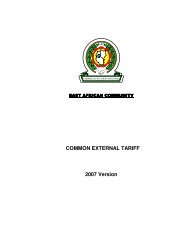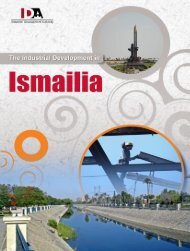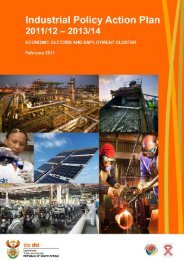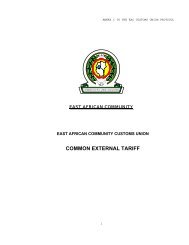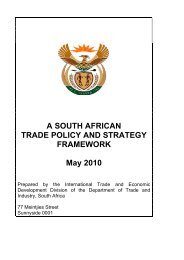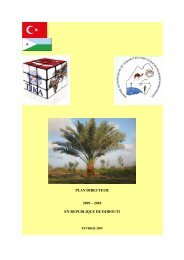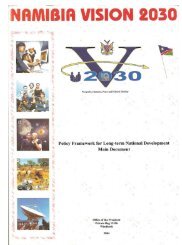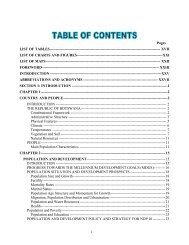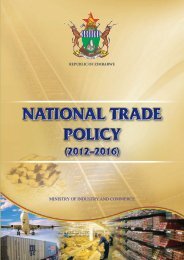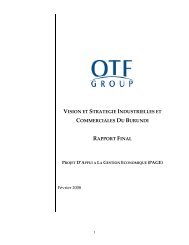rwanda national export strategy - minicom
rwanda national export strategy - minicom
rwanda national export strategy - minicom
You also want an ePaper? Increase the reach of your titles
YUMPU automatically turns print PDFs into web optimized ePapers that Google loves.
RWANDA NATIONAL EXPORT STRATEGY<br />
FLAGSHIP IMPLEMENTATION PLAN/Targeted sectors<br />
Sector Action Lead Institution<br />
Tourism • Diversify into avitourism and MICE by building supply side capacity, working with incentive houses RDB Tourism and<br />
and undertaking tailored marketing activities<br />
• Diversify into cultural tourism by establishing a cultural village and events <strong>strategy</strong><br />
Conservation<br />
• Attracting investment in anchor tourism brands and increased airline traffic<br />
Tea • Increasing production quantity and quality by improving input provision, transportation and factory<br />
capacity<br />
• Privatize Gisovu, Mulindi and Shagasha tea factories<br />
• Moving up the value chain through product development, new <strong>export</strong> channels and marketing<br />
Coffee • Increase production quantity and quality by improving input provision, planting 20 million coffee<br />
seedlings annually, improving road access to coffee washing stations, and providing technical support<br />
and new financing tools to washing stations<br />
• Improving the sector‟s brand through marketing and contract enforcement<br />
• Reviewing the impact of coffee <strong>export</strong>er fees on competitiveness<br />
• Moving up the value chain by building a roasting factory and partnerships with toll roasters, as well as<br />
marketing<br />
Mining • Develop a mining database to encourage investment<br />
• Put in place strong certification systems<br />
• Create incentives to encourage value addition<br />
• Establish regional mining services sector (the Kigali Mineral Campus)<br />
BPO • Audit and improve the skills base<br />
• Attract investment by establishing incentives to boost investment and domestic demand<br />
• Lead the deployment of regional cloud activity through the <strong>national</strong> data centre<br />
Horticulture • Conduct initial trials for priority crops<br />
• Establish a wholesale market for fruits and vegetables<br />
• Improve the provision of inputs, including consolidating an additional 450,000 hectares of land, and<br />
promoting organic production<br />
• Facilitate investment in processing, in part through the provision of incentives and investment in<br />
storage and packaging production<br />
Home Decor &<br />
Fashion<br />
• Improve supply side capacity through technical, managerial and marketing capacity building<br />
• Conduct market research and facilitate linkages with inter<strong>national</strong> markets<br />
• Implement the Rwanda Craft Industry Sector Strategic Plan (2009)<br />
• Support the development of the handicraft secretariat<br />
Green Fields • Conduct skills and training audits for priority sectors<br />
• Attract FDI, by establishing a Biotech coordinating body and cluster-specific organizations<br />
OCIR-<br />
The/MINAGRI/RDB<br />
Agri-business<br />
OCIR-<br />
Café/MINAGRI/RDB<br />
Agri-business<br />
OGMR<br />
RDB/ICT<br />
RHODA, RDB<br />
RDB/MINICOM<br />
RDB<br />
Page 46



